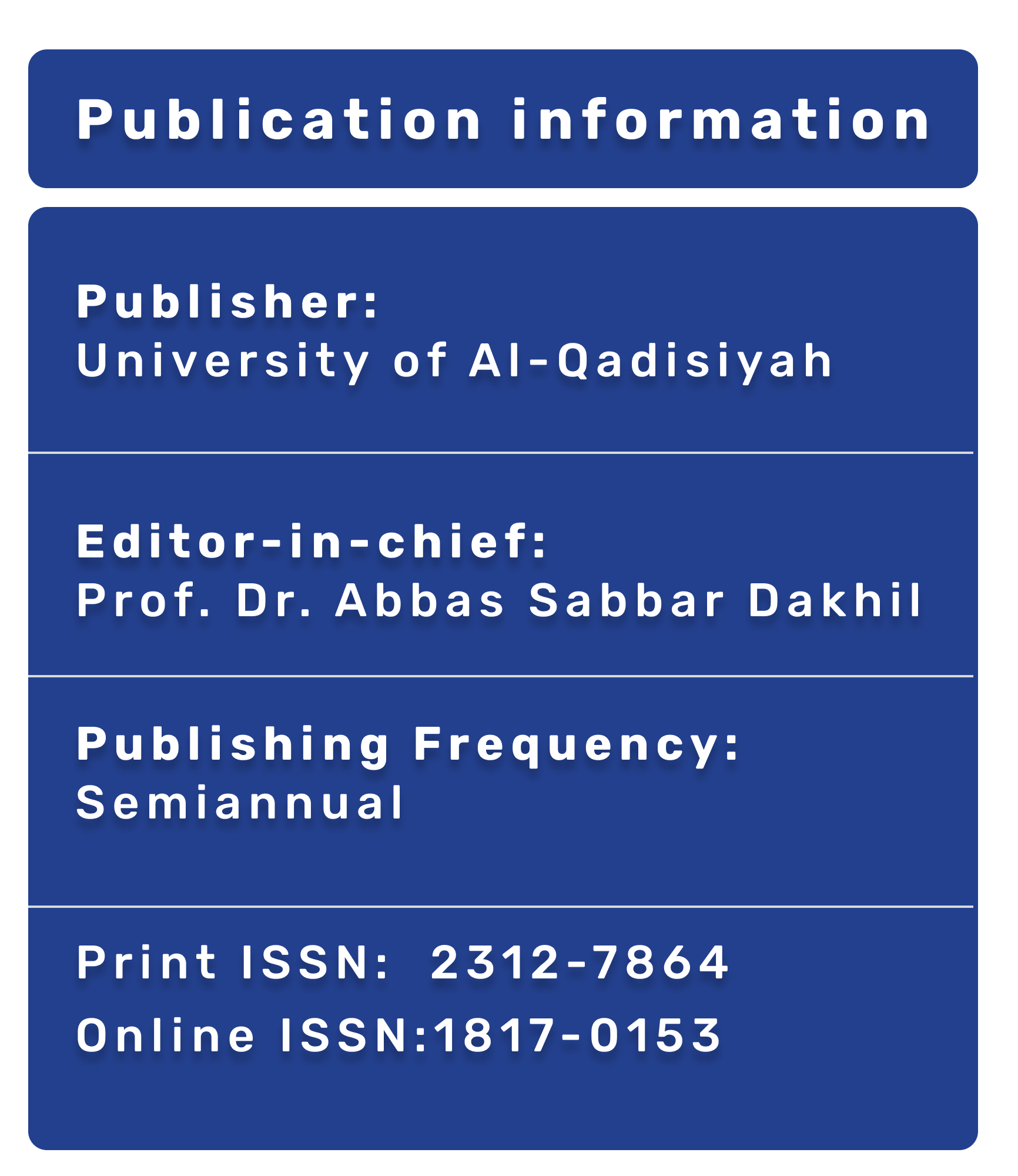Co-infection intestinal fungi and protozoa inimmunocompromised patients with detection of some virulence factors of these organisms by using Polymerase Chain Reaction (PCR)
DOI:
https://doi.org/10.28922/qmj.2015.11.19.180-189Abstract
In this study was undertaken to detect some virulence factors to co-infection of intestinal fungi (Candida albicans, Aspergillus fumigates) and parasite (Giardia lambelia, Entameba histolytica) in immunocompromised patients by polymerase chain reaction(PCR)technique.About, 100 specimens of stool were collected from three groups of patients included malignant tumor (35), , renal failure (50) and HIV (15) during period 5 November 2012 to 15 May2013.
The results of this study showed the highest rate infection(66.66%) was in HIV while lowest rate (57.14%) were in malignant tumor patients .So the highest rate were recorded in age group (60-75),then male recorded rate infection(69.04%) while in female (53.44) but statically no significant difference between two groups.Candida albicans recorded highest rate prevalence recorded to (41%) followed by Aspergillus fumigates (34%) and Giardia lambelia (53%) while Entameba histolytica (46%). According to the results of molecular test showed Candida albicans contain asp gene in (350 bp) sequence and Aspergillus fumigatus contain Gliotoxin gene in (550bp) sequence. So Giardia lambelia contain Cystine Rich Protein CRP65gene in (460 bp) sequence and Entameba histolytica contain Lectin(hg13) gene ( 900 bp) The results of this study showed the yeast and fungi appeared high resistant to antifungal which used in this study except Amphotericn B which were sensitive to it by rate (80%).








